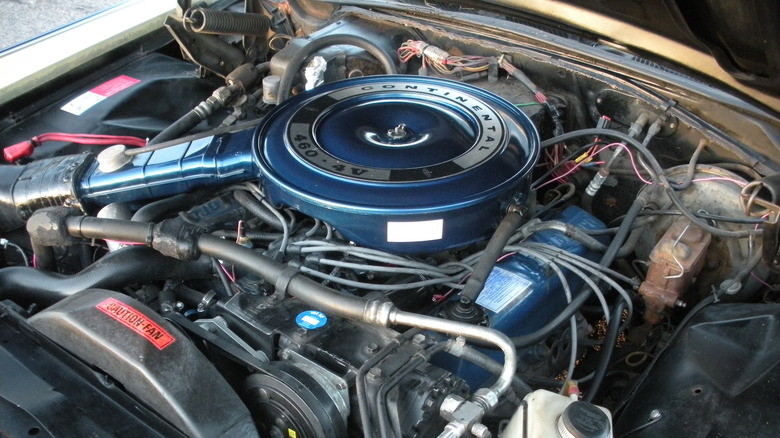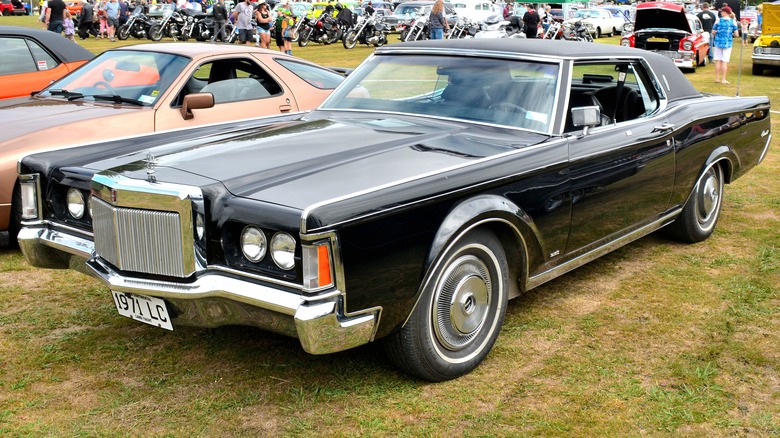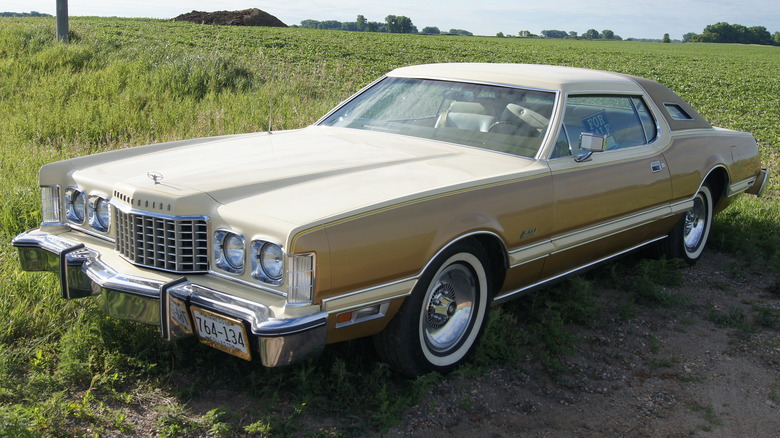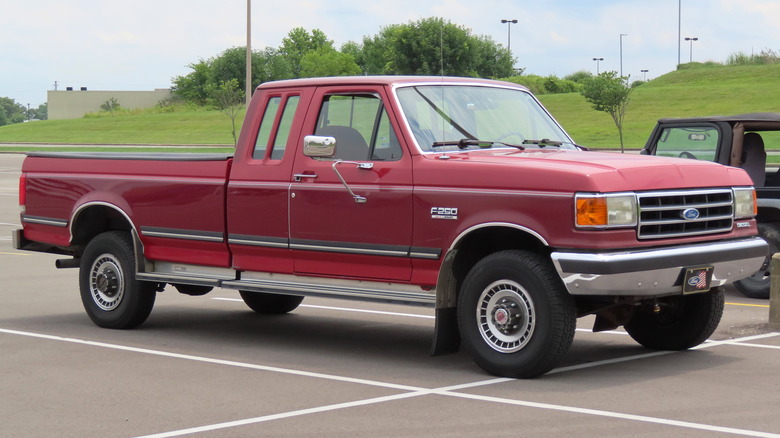The Best & Worst Years For Ford's 460 Engine: Which Should You Avoid?
The lifespan of Ford's 385 engines was one of the longest in the company's history. They debuted in 1968, and for the next 30 years Ford placed them under the hoods of many different vehicles, from full-size luxury cars to large pickup trucks to even some muscle cars. All the engines in the 385 line were cast-iron big-block V8 engines that could deliver a lot of power.
Over the course of three decades, Ford only produced the 385 V8 engines in three different displacement sizes. You might think one of them was 385 cubic inches, but that number actually signifies something else. The three sizes were 370, 429, and 460 cubic inches. The 385 line got its name from the largest of the engines, the 460, as the stroke of that engine is 3.85 inches. Even though that stroke length only applied to the 460, with the 370 and 429 sharing a 3.59-inch stroke, it was the 460 that set the standard.
When the same engine spends that long in production, there are bound to be times where it works better than others, as any automaker constantly tries to find ways to update its equipment. Some of these evolutions are successful, but not all of them work out. Let's look back at the life of the 460 and see when it became one of the most iconic big-block engines ever built and also when it faltered. These time periods were chosen based on reports from several publications about the V8 engine's various eras.
[Featured image by DaveLphx8 via Wikimedia Commons | Cropped and scaled | CC BY-SA 4.0]
The best years for the Ford 460
When it comes to the 460 variation of the Ford 385 engines, it's best to start at the very beginning when the engine went into production in 1968. Right out of the gate, it was a hulking, massive V8 that was something of a force to be reckoned with. With its 3.85-inch stroke and 4.36-inch bore, it could generate 365 horsepower. Keep in mind this engine weighed a massive 720 pounds, so you weren't putting it into a muscle car.
The 460 debuted in the full-size Lincoln Continental Mark III, a large luxury sedan that didn't need to sacrifice power. In the coming years it was added to the likes of the Ford Thunderbird, Mercury Marquis, and Ford F-Series. Those beginning years are when the 460 was totally uninhibited, but after 1972, EPA emissions controls and an oil crisis changed the power ratings and the 460 engine for many years.
The 460 lingered around but didn't see another big resurgence until around 1988. This was when the engine was given fuel injection for the first time, which helped increase its diminished power. Though it didn't reach the heights of that first era, you could still get 235 horsepower and an impressive 395 lb-ft of torque, and as the engine moved into the '90s, those numbers even went up a little to 245 horsepower and 400 lb-ft of torque. The 460 V8 started off incredibly strong and ended on an upswing.
[Featured image by GPS 56 via Wikimedia Commons | Cropped and scaled | CC BY 2.0]
The worst years for the Ford 460
The 1970s saw many V8 engines from every automaker in the United States crash and burn. The Clean Air Act was passed by Congress in 1970, and among the many efforts to combat pollution in that law was that car companies had to drastically reduce the emissions from their engines by 1975. Pairing those restrictions with the 1973 oil embargo led to people rethinking fuel efficiency, and the humungous V8 engines that were powering America's muscle cars were suddenly no longer all that enticing to the average driver. In 1972, the Society of Automotive Engineers changed how horsepower was measured, and all those high numbers at the height of the V8 era were reduced, often by over 100 horsepower.
This is why the Ford 460 post-1972 and into the 1980s wasn't exactly anyone's dream engine. That 365-horsepower rating from the early years had been cut down to just 212 horsepower. With its power dramatically hindered and it already not being a very efficient engine, Ford removed the 460 from a number of vehicles, outside of trucks and vans from the F-Series and E-Series. That isn't to say these engines were disasters, but they were undoubtedly a product of their time, which was not very kind to V8s. Luckily, they were able to rebound in the late 1980s.
[Featured image by Greg Gjerdingen via Wikimedia Commons | Cropped and scaled | CC BY 2.0]
How these years were determined
Although it may not be the best-known engine ever made by Ford, the 460 from the company's 385 line of V8s still has plenty to offer as one of the biggest V8s produced by Ford. So, if you are looking to get yourself a Ford 460, either for a restoration project or as something that already comes with a vintage automobile, this is how we determined the highs and lows of the lifespan of the Ford 460 V8. First, we examined the history of the engine's three decades which was broken down by publications like Driving Line, Motor Trend, and HotCars. Then, based on the ratings of the distinct eras of the 460, one could see how the engine performed better in certain years when it came to power and adaptability with various vehicles.
[Featured image by MercurySable99 via Wikimedia Commons | Cropped and scaled | CC BY-SA 4.0]



